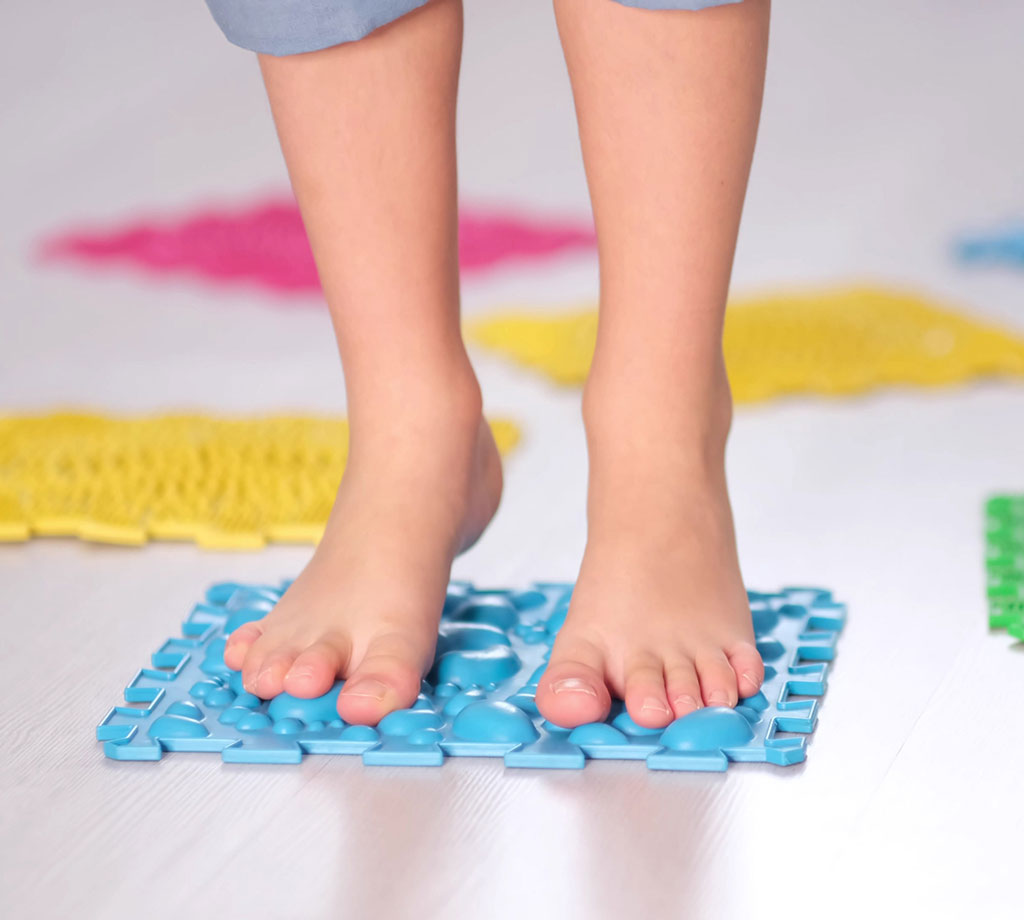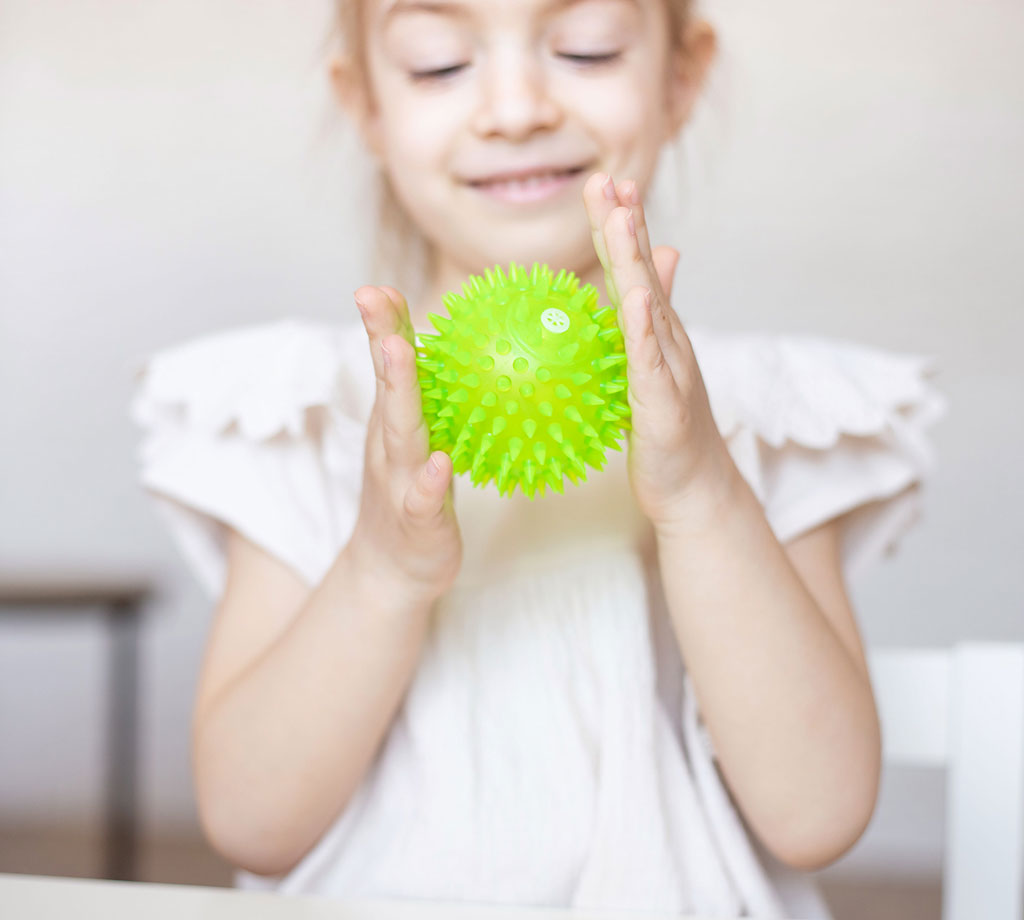The first system to be completely developed and operational in a young child is the vestibular system. No single sense is more important than the others, but the vestibular system plays a key role that affects them all and is central to learning, development, and motor coordination. Our vestibular system allows us to deal with gravity; it is at work even in utero when a fetus begins to develop a sense of direction while floating in the womb. Once born, the real work begins when a boy moves his body for the first time, eventually gaining the strength to lift his head off a flat surface or rotate his neck toward his mother’s breast. The vestibular system is vital to learning and development—and it is also an area in which we focus sensory integration therapy.
The vestibular system controls our balance, our muscle tone, and our spatial orientation. Situated in the inner ear, this system consists of three fluid-filled canals that are set at right angles to each other. They respond to movement and changes in direction along with two fluid-filled vestibular sacs in the ear that additionally react to changes in head position and gravitational pull. Hair cells that line these structures are stimulated through motion and send neural signals through the vestibular cochlear nerve in the ear directly to the cerebellum (the part of the brain that affects motor control and motor learning).
The cerebellum receives this vital information from the vestibular system and then works to fine-tune it, processing information through different areas of the brain via the corpus callosum, increasing postural control, coordinated movement, bilateral coordination, and the development of motor skills. At the same time, auditory information goes from the ear to the language centers in the brain’s cortex (where memory, attention, perceptions, and thoughts are also processed), while the cerebellum works to process information about where the body is in space. In addition, as this information enters the brain, whether through sound, movement, and/ or vibration, it integrates with the visual system. This further influences the development of visual motor skills, like handwriting and depth perception. Because of this complex interrelationship, if any of these structures have difficulty sending messages and integrating with each other, then balance and coordination, speech and language, and reading and writing can all be affected.
Without a properly functioning vestibular system, every time we move our head, we’re at risk of losing our balance or losing our place on a page as we read. When a child can’t move her eyes independently from her head (for instance, looking to the left while keeping the head facing straight ahead), the attempt to read can become laborious and frustrating, and kids simply lose interest in trying to make sense of the words on a page. Without a properly developed vestibular system, it is also virtually impossible for a girl to visually track a ball that’s thrown toward her and coordinate her body to catch it or for a boy to anticipate where a ball is going in order to kick it intentionally into a net.

When sensory integration theory was developed by occupational therapist and educational psychologist Jean Ayers back in the 1960s, it was successfully argued that many children with learning disorders have symptoms of vestibular dysfunction, and, in particular, an absence of bilateral coordination, which is vital to the development and maintenance of muscle tone body strength, and postural core stability. (Bilateral coordination is a function of the vestibular system that allows for both sides of the brain to talk to each other to produce coordinated movement.) In fact, vestibular input promoting adequate bilateral coordination is critically important for a variety of diverse skills, including being able to catch a ball, read a book, and even learn how to gallop and skip.
Without appropriate vestibular functioning leading toward adequate bilateral coordination, children are inevitably delayed in developing movement skills that require using both sides of the body. They have difficulty developing their postural control, as well as developing the eye-hand coordination required for activities like playing ball and copying things off the board. It should not be surprising to know that a baby who avoids crawling may lack bilateral coordination later and may have trouble reading and writing as a result.
Bilateral coordination also allows children to sit calmly in a chair so they can focus on the task at hand while crossing their midline with their eyes and hands, enabling them to develop strong motor skills with the smaller muscles in their hands. (Imagine an invisible line down the middle of the body. To read smoothly, your eyes have to be able to move from the left to the right. When there is a disturbance in crossing the body’s midline, the entire head turns, contributing to a frequent loss in place when one attempts to read, leading to added frustration or inattention.) Without it, kids can’t help but give in to gravity or get distracted—slouching over their desks, propping themselves up on their elbows, or wiggling around unconsciously. These children have little physical endurance, so they struggle when working on written tasks for long periods of time. When postural muscles are not working well together, it not only becomes significantly harder for the hands to manipulate small objects (like a pencil), but it also interferes with how the eyes are able to track visual input across the body’s midline.
The vestibular system not only influences the motor control of the major muscle groups in the body, but it also affects how the throat, tongue, lips, and jaw work together in concert to produce intelligible speech. In addition to how one produces speech, this same system affects how the brain processes and organizes speech. If there is trouble with the ears due to frequent ear infections or chronic fluid, this same system may have additional challenges identifying voices or discriminating between sounds. This can be a huge source of distraction for anyone, so when the vestibular system is not working properly, requests may be easily misinterpreted, directions are misunderstood, and multiple instructions become next to impossible to follow in sequence.
Ultimately, kids with significant vestibular problems develop anxiety about the simplest elements of their daily lives—because nothing is simple, not even walking across a room. Depression can follow because their bodies just don’t feel good—they don’t feel good in their bodies—so we focus intently on their vestibular systems as we treat sensory integration disorder, allowing them to have better integration within their bodies.
By Sally Fryer Diets, PT, DPT, CLC, CSTD







